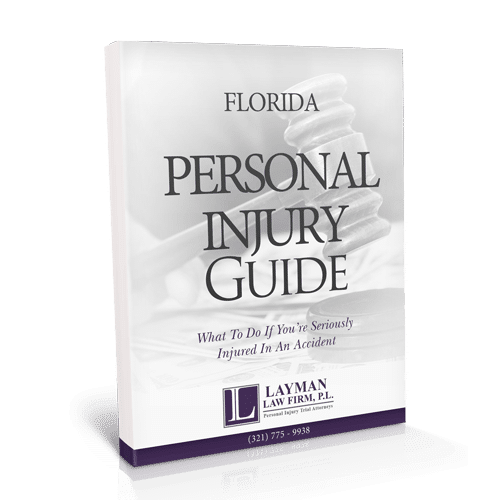Melbourne Paraplegic Injury Lawyers
The National Spinal Cord Injury Statistical Center (NSCISC) reports that approximately 302,000 people in the United States are living with a spinal cord injury and there are almost 18,000 new spinal cord injuries each year. Of those living with a spinal cord injury, 40 percent are suffering from a paraplegic injury and the remaining 60 percent are considered quadriplegic.
According to NSCISC data, the leading cause of spinal cord injuries throughout the U.S. is vehicle accidents. The second leading cause is fall injuries. Other causes include sports, violence, and medical/surgical errors.
If you or a family member sustained a spinal cord injury in a vehicle, fall or other type of accident and are suffering with incomplete or complete paraplegia, you may be entitled to compensation for the physical, emotional, and financial devastation the injury caused. Florida law allows you to sue for damages if another party or parties’ negligence or wrongful conduct caused or partially caused your injury accident.
The experienced Melbourne paraplegic injury lawyers at Layman Law Firm, P.L., understand how devastating paraplegic injuries can be and are committed to helping you obtain the full, fair compensation you deserve. We work tirelessly to identify the parties responsible for the paraplegic injury and aggressively pursue full and fair compensation for you.
If you or a family member suffered a paraplegic injury and you believe that another party caused or contributed to the accident that resulted in the injury, contact the experienced and compassionate Melbourne paraplegic injury lawyers at Layman Law Firm as soon as possible. We want to hear about your paraplegic accident and help you decide on the best course of action.
In Florida, you have only two years from the date you were injured to file a lawsuit, so please don’t wait to call us at 321-773-2111 or fill in the Free Case Review form on our website to get started on your case.
Types of Spinal Cord Injuries
The human spine is comprised of bones called vertebrae, with the spinal cord running through the bones. That cord is made up of bundles of nerves that carry messages from your brain to all parts of your body and from the parts of your body back to your brain. Our ability to do everything, from feeling the heat coming off a hot stove to standing upright and walking, depends on a functioning spinal cord.
A spinal cord injury, caused by a bruise, tear, or complete severing of the spinal cord can lead to serious injury. When a spinal cord injury causes paralysis, it can be classified as follows, depending on the area affected and the severity of the paralysis:
- Tetraplegia. Also known as quadriplegia, this occurs when there is paralysis of the arms, hands, trunk, legs, and pelvic organs.
- Diplegia: When paralysis occurs on the same area on both sides of the body, such as both arms or both sides of the face.
- Hemiplegia: Paralysis on one side of the body.
- Monoplegia: Paralysis of one limb.
- Paraplegia: Paralysis that affects both legs and may impact the torso.
All spinal cord injuries can have devastating, life-altering effects on accident victims and their families. If someone else’s negligent or wrongful action caused or partially caused the spinal cord injury accident, it is important to get expert legal help to hold the negligent party or parties accountable and get the financial compensation you need and deserve.
What Is a Paraplegic Injury?
A paraplegic injury is an injury to your lower spine that affects your legs and lower body. Paraplegic injuries can be incomplete or complete, and paralysis can occur immediately or develop over time as swelling and bleeding affects the spinal cord.
Accident victims who have incomplete paraplegia injuries may have some control of muscle activity below their injury site because their spinal cords are still able to transmit some messages to or from the brain. Those who have complete paraplegia injuries have no nerve communication below the injury site, so they have no sensory or motor function below the site.
What Are the Common Causes of Paraplegic Injuries?
While stroke is the leading cause of all types of paralysis, traumatic injury to the spinal cord is the cause of almost one in three paraplegic injuries of people living with paralysis, according to the Christopher and Dana Reeve Foundation.
The National Spinal Cord Injury Statistical Center reports that when a traumatic injury is the cause of paralysis, the most common causes are:
- Vehicular 37.6%
- Falls 31.5%
- Violence (primarily gunshot wounds) 15.4%
- Sports/Recreation Activities 8.3%
- Medical/Surgical 3.6%
- Other 3.6%
If another person or persons’ negligence or wrongful conduct caused or partially caused a paraplegic injury in Florida, the victim has a right to bring a claim for damages against the at-fault party or parties. Contact the experienced Melbourne paraplegic injury lawyers at Layman Law as soon as possible to find out if you should pursue a claim.
What Are Symptoms of a Paraplegic Injury?
While a complete paraplegic injury will result in the loss of sensation and inability to move both legs, there are other symptoms a victim may suffer in addition to paralysis, such as:
- Partial loss of movement
- Loss of or altered sensation, including the ability to feel heat, cold, and touch
- Loss of bowel or bladder control
- Exaggerated reflex activities or spasms
- Changes in sexual function, sexual sensitivity, and fertility
- Pain or an intense stinging sensation caused by damage to the nerve fibers in your spinal cord
- Difficulty breathing, coughing, or clearing secretions from your lungs
These symptoms can make everyday life difficult and may require ongoing care and treatment. The settlement or award you receive in a personal injury lawsuit can help compensate you for the physical, emotional and financial difficulties you may experience because of your paraplegic injury.
How Is a Paraplegic Injury Treated?
Despite incredible advances in medicine and science over the last several decades, there is currently no way to repair a damaged spinal cord. Surgery may be required immediately following a spinal cord injury to evaluate the extent of the injury, set or stabilize fractured bones, and stabilize the remaining portion of your spinal cord. However, after the initial evaluation and stabilization period, treatment for a paraplegic injury focuses on preventing further injury, reducing inflammation, and rehabilitation to help you learn to live with the injury.
Rehabilitation may involve physical and/or occupational therapy, learning to use a wheelchair and home modifications, and mental health counseling to help with the emotional trauma you may suffer after a paraplegic injury. Depending on the extent of the injury, various types of care may be needed for the rest of your life.
What Does It Cost to Live with Paraplegia?
A paraplegic injury often causes immense physical pain and emotional trauma. The sudden inability to walk or feel anything in your legs is a life-altering injury. Between the medical bills and lost income, a spinal cord injury can also result in financial devastation.
Annual expenses and estimated lifetime costs that are directly attributable to paraplegia vary based on education, neurological impairment, and pre-injury employment history. However, the NSCSC collects enough data to compute average expenses. According to their data, first-year expenses for a paraplegic injury average $641,153, with each subsequent year costing $84,934. An average lifetime cost for someone who suffers a paraplegic injury at age 25 is $2,854,323; for someone who is injured at age 50, the cost is $1,873,220.
In addition to direct costs for care, hospital stays, doctor visits, medication and assistive devices, people with paraplegic injuries also suffer indirect costs, such as lost income, lost employment benefits, and lost productivity. These indirect costs average an additional $88,915 per year.
Am I Entitled to Compensation for My Melbourne Paraplegic Injury?
When a traumatic event causes a paraplegic injury, it is often the case that negligent or wrongful conduct on the part of another party (or several parties) caused or contributed to that event. If so, you may be entitled to substantial compensation for both the economic and non-economic damages you suffer. Economic damages represent the objective, out-of-pocket expenses resulting from the injury, such as:
- Medical expenses, including doctors, hospital stays, procedures, diagnostic tests, and medications
- Rehabilitation, in-home care, and long-term care costs
- Lost income or loss of earning capacity
- Specialized medical equipment and assistive devices
Non-economic damages represent the subjective, intangible injuries related to the paraplegic injury, including things such as:
- Pain and suffering
- Mental anguish
- Loss of enjoyment of life
- Disfigurement and disability
- Mental anguish
- Your family’s loss of your companionship, assistance and guidance
The experienced paraplegic injury lawyers at Layman Law Firm will identify all the economic and non-economic damages you have experienced and will continue to experience in the future. We will build a compelling case demonstrating your need for substantial compensation; negotiate aggressively with insurance company representatives for a full, fair settlement; and fight in court, if that’s what it takes to get you the award you deserve.
Contact Experienced Melbourne Lawyers for Expert Legal Help with Your Paraplegic Injury Case
If you suffered a paraplegic injury and you believe that another party caused or contributed to the accident that resulted in your injury, contact the experienced and compassionate Melbourne paraplegic injury lawyers at Layman Law Firm, P.L. to discuss your legal options. We have the experience and skill you want and the commitment to achieving the full, fair compensation you need.
Call us today at 321-773-2111 or submit the Free Case Review form on our website for expert legal help with your paraplegic injury case.






